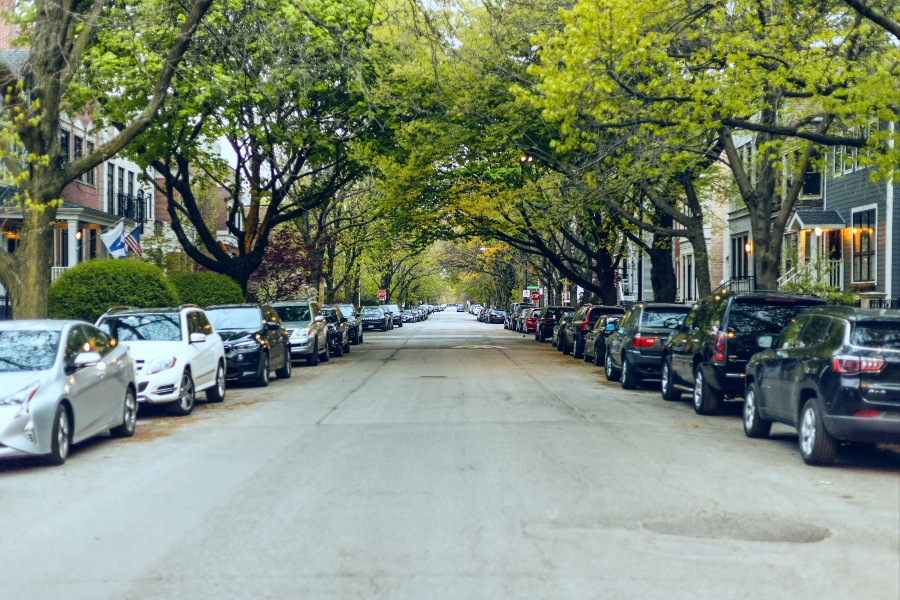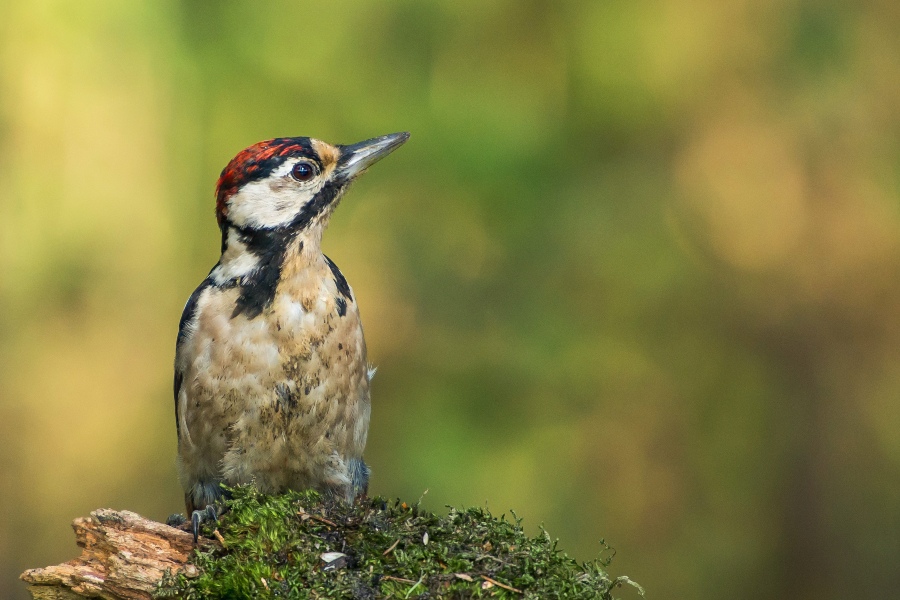Tree Ages & Life Stages Explained
When considering the importance of trees, it’s helpful to think in terms of the stages of a tree’s life cycle rather than its age. Different species of tree grow at different rates and life expectancy can range from decades to thousands of years. Measuring age isn’t a helpful way of knowing if a tree is, for example, a young sapling or a waning ancient tree.
There are six stages of tree life:
- Seed/Sprout
- Seedling/Whip
- Semi-mature Tree
- Mature Tree
- Veteran Tree (& Ancient Tree)
- Dying Tree
The first three stages are when the tree is growing and developing, it’s the childhood of trees. The second three stages are the adulthood of trees.
We’re focusing on the mature, veteran and ancient stages because these are when trees are most established and have the most valuable impact on the environment. They are defined as follows:
- Mature Tree – Core life stage measured from when the tree forms its first flowers or fruits.
- Veteran Tree – A tree is classed as veteran when it adds exceptional cultural, landscape or nature conservational value.
- Ancient Tree – This is based on age, and is dependent on species and certain characteristics, such as a wide trunk or a reduced crown size. Both mature and veteran trees can be considered ancient trees if they reach the age threshold for their species.
Mature, veteran and ancient trees all have a specific value to ecosystems and the environment as a whole. Here, we look at why ancient, veteran and mature trees are critical for our ecosystems and environment overall.
Mature Trees Benefit Urban Areas & The Environment

Trees in towns and cities help make the air cleaner, reducing the amount of pollution we take in and reducing the amount of toxic fumes that enter the atmosphere. Trees planted on high traffic streets can improve air quality.
Certain Types Of Trees Are More Effective At Improving Air Quality
Specific varieties of trees have been found to be more effective, including: silver birch, elder and yew. And that’s not all. It isn’t just the type of tree that plays into how much it improves air quality. Age is a significant factor. Young, new trees, called saplings, have small canopies while growing so their ability to convert CO2 is less than mature trees. Mature trees are the most powerful converters. Where older trees are removed and replaced with younger trees, air quality decreases, damaging the environment further.
One Mature Tree Provides The Oxygen Needed By 10 People
For every 10% increase in tree canopies in urban areas, there is a 3-7% decrease in ozone reduction. Trees are proven to reduce the Greenhouse effect and mature trees produce oxygen the most effectively of all the tree life stages since they are at their peak size and health. In fact, one mature tree will over the course of year produce enough oxygen for 10 people. This really showcases the phenomenal power of mature trees and the importance of them to the environment. But there is more!
Trees Reduce Storm Runoff & Water Pollution
In urban areas, storm runoff is a serious concern. In forests, rainfall is dispersed over the soil and absorbed, but in cities it runs into drains, taking with it all the city pollutants, such as chemicals used for cleaning, rubbish and pesticides. The drains then run this harmful water into streams.
This build-up of pollutants not only collects in waterways, it harms the animals living in the water and who drink from the streams. Additionally, without trees and soil to absorb the water from rainfall, this excess water being pumped into rivers can cause flooding, erosion and damage to habitats of various flora and fauna.
Mature trees, veteran and ancient trees catch rainfall with their branches and leaves, and absorb it into the soil they stand in, helping to reduce the amount of water that washes into streets and down drains. Without the trees, water would wash unhindered in huge quantities. With trees, particularly mature trees, the amount of water is reduced and slowed, causing less damage down the line in waterways and streams.
Veteran & Ancient Trees Are Habitats For All Kinds Of Wildlife

Diversity of wildlife is imperative for a thriving ecosystem. Every plant, bug and beast has a role to play and they do so in sync with one another. When one part is thrown off balance, it will negatively affect the others. While mature trees are the most effective at air quality improvement and protecting against rainfall, it is veteran and ancient trees that have the most underestimated impact on wildlife.
Rare Species Flourish In Dead Wood
You might think that when a tree is damaged, dead or dying it no longer has value in the ecosystem. However, dead wood and cavities in trees are the homes for numerous rare species of fungi, invertebrae, lichens, birds, bats and other animals.
In most cases the trees with the necessary habitats are older ancient or veteran trees – though it is possible for damaged mature trees to perform this function too. Dead wood is certainly most common in the final, dying stage, but occurs in trees of all stages, from mature onwards. Damaged mature, veteran and ancient trees will all have dead wood that helps rare species to flourish, while providing other functions.
Veteran & Ancient Trees Support Many Species
Veteran and ancient trees support ecosystems in the following ways:
- Fungi – they feed off dead wood, helping to decompose the matter and remove inorganic nutrients. This is then fed into the soil which allows new plants, including trees, to grow.
- Invertebrates – there are at least 2,000 varieties of insects, worms, spiders, etc, which rely on decaying wood as a food source or habitat. Removing this source destroys them and takes them out of the food chain for larger creatures.
- Fauna – bats, squirrels and woodpeckers all make their home in these trees.
- Lichens – these grow on the outside of trees and cavities and, though they might look harmful, are non-parasitic. Lichen is often used as nesting material by animals and birds.
- Flora – some flowers grow around and near ancient and veteran trees, such as bluebells, honeysuckle and wood sorrel.
Older Trees Provide a Variety Of Tree Habitats
A mix of trees at different stages of life is of benefit to flora and fauna as they provide a range of habitats for them to live in. It’s important to have various maturities to give each species somewhere to go as the trees move into their new age groups. Think about birds who live in mature trees, what do they do when all the trees age into veterans? Or bugs that live off dead wood, where do they go if all the old trees are removed and there are only new saplings to replace them?
In urban and rural areas, ensuring there are veteran and ancient trees, as well as mature and new trees, helps to retain balance in the ecosystem.
Maintaining & Protecting Mature, Veteran & Ancient Trees
Proper maintenance of trees at every life stage will enable them to perform the necessary functions for the environment and the local ecosystem they exist within. At Reeves, we work very hard to maintain and protect trees whenever possible and only remove trees when absolutely necessary; typically this is due to a safety concern such as the tree falling on a building.
Using Tree Surgery For Growth & Safety
Tree surgery is one of the regular services we provide, but this isn’t just removing or felling trees. Tree surgery also involves pruning trees by removing unhealthy or damaged branches to allow the rest of the tree to grow and flourish as much as possible. At times, dead wood may also be removed to allow the tree to continue to grow, though it isn’t always necessary depending on the local environment.
Certainly, for safety reasons, a dead or dying tree, especially if seriously damaged, may need removal. However, where there is no danger to the public, these trees can be preserved. Veteran and ancient trees are fundamental to all kinds of life, and nowhere is this more important than in woodlands. Here, a thriving ecosystem depends on trees of all ages.
Caring For Veteran & Ancient Trees
Ancient and veteran tree care is another service that allows trees to prolong their lifespan and thereby continue to benefit the ecosystem they exist in. While some of this care can include tree surgery, it will also include using cables and bracing to support older trees and reduce stress on the tree from wind, rain and snowfall. Soil maintenance, using mulching to add nutrients and general land maintenance, will also help ancient trees to continue their long lives and veteran trees to stand for as long as possible.
Professional Support For Trees
We must continue to protect the need for trees at all life stages, making sure that each generation grows into the next stage and continues to maintain the ecosystem for years to come. As arboriculturalists, we provide a necessary service for the environment by caring for, maintaining and supporting trees at all life stages. We love what we do and have a reverence for the impact the work we carry out has on the environment as a whole.
